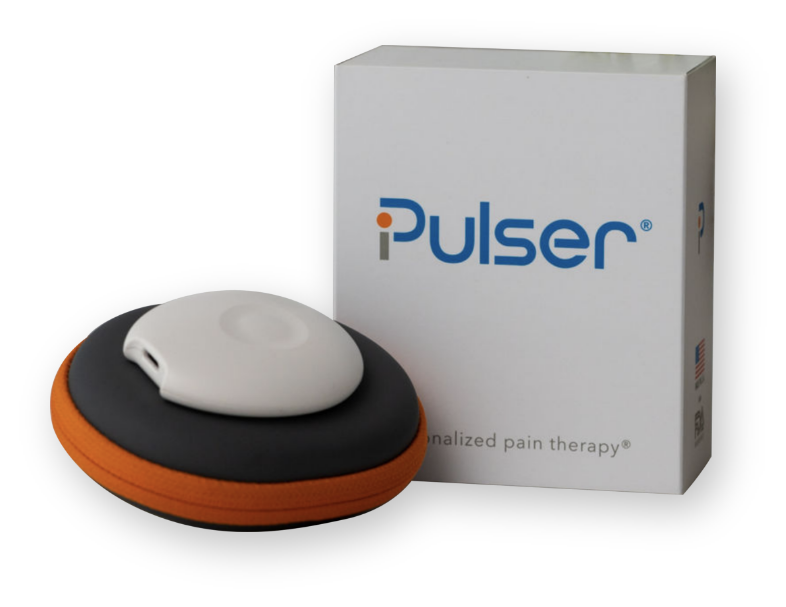If you are someone that deals with sciatica pain, it may feel unbearable to you at times. Suffering from sciatic nerve pain can cause you to put off tasks or things you enjoy because you’re in so much pain. The pain from sciatica can happen for many reasons, but the most common causes include spinal disc ruptures, spinal stenosis, and injury.
Sciatica pain is not a hopeless ailment. There are many ways you can try to reduce the pain on your own.
How to Treat Your Sciatica Pain
Treating sciatic nerve discomfort differs upon the level of severity. It's best to start with the least invasive treatment to see if you can find relief before turning to medications. Exercise, stretching, and massage often loosen the muscles around the nerve.
Although sciatic pain can be excruciating to you at times, relief is achievable through a variety of remedies such as:
- Physical therapy
- Chiropractic adjustments
- Massage treatments
- Improvements to strength and flexibility
- Hot and ice packs
- Anti-inflammatory Medication
- Analgesics
- Muscle relaxants
- Steroids
- Nerve Pain medications
Combining physical therapy and exercise is a great place to start when attempting to treat sciatic nerve discomfort. Sciatic pain often affects the thighs, abdomen, buttocks, and lower back.
Does Physical Therapy Help?
Physical therapy can help your sciatic pain because it helps to strengthen muscles and tissue of the back, abdomen, pelvis, and buttocks. Here are a few of the most common techniques used by physical therapists:
- Back exercises- Physical therapists use back exercises to work on extension and flexion throughout the affected areas.
- McKenzie Method- A trained clinician in this particular method makes a thorough assessment before beginning the treatment. From the assessment, they teach the patient exercises specific to their condition.
- Strengthening exercises- Exercises such as planks, bridges, resistance bands, and weight training may help improve symptoms.
- Form Training- This focus is on proper form and technique. Learning about proper ways to bend over, squat, carry, and lifting techniques will help prevent further injury.
- Nerve Mobilization- This technique identifies which nerve is experiencing compression. After identifying the discomfort, therapists are able to access the surrounding muscle groups to alleviate the compression.
- Joint mobilization- Physical therapists usually incorporate this form of treatment to help mobilize various joints. The therapist applies a certain level of pressure and technique to treat symptoms.
- Dry needling- This tool is a newer technique that is growing in popularity. This is also known as intramuscular stimulation. Therapists place needles in certain trigger points around muscles that spasm or have knots. The needles release the tension in these areas.
- Soft tissue mobilization- The therapist utilizes massage and counter pressure techniques to decrease pain and increase the functionality of affected body points.
- Myofascial release- This type of therapy focuses on the connective tissue between muscles, joints, and nerves. This is called fascia. The physical therapist or massage therapist would work on the fascia to help the muscles release.
- Acupuncture and acupressure- The practitioner inputs thin needles into particular areas of the skin. In acupressure, the therapist places pressure on these same points to help restore appropriate blood flow along certain meridians throughout the body.
- Chiropractic adjustments- Chiropractic adjustments are another useful tool in the relief of sciatic nerve pain. Chiropractors can assist with sciatica by increasing mobility and minimizing discomfort. Similar to physical therapists, chiropractors utilize dry needling and soft tissue mobilization through chiropractic adjustments.
- Massage Therapy- Massage therapy is also a great tool to help manage sciatic nerve pain. Massage therapy benefits include muscle relaxation, better circulation, and stress reduction. Massage therapists also use a combination of aromatic and essential oils that, once rubbed into the skin, have a curative effect on injuries.
- Electro Therapy- A TENS unit is a machine often used in physical therapy treatments. It sends electrical pulses to stimulate the nerve and help it relax and release.
- PEMF- This type of therapy uses magnetic waves to increase blood flow to the sciatic area and helps the muscle relax.
How Do I Get My Sciatica Nerve To Stop Hurting?
Finding relief from sciatic nerve pain can feel hopeless at times. It keeps you up at night, bothers you while you’re sitting or trying to relax, and makes it hard to workout or do things you enjoy. Some people try to massage the area with their hands to reduce the pain, but that is not as effective as using a tool to help massage the area.
If you want to try self-massage, place a tennis or lacrosse ball under a painful area while lying on the floor and then proceeding to gently roll the area out. Once a sore area is identified, gently continue pressing the ball around that area. This may help to release tension, massage connective tissue and lactic acid in the muscle. Here are some other helpful ideas to help manage sciatica discomfort from home:
- Take a warm bath- Epsom salts will help soothe muscles.
- Utilize a foam roller- Foam rollers are great for rolling out large muscle groups like the glutes and thighs. Using them on your back is great too.
- Massage guns- These automated massage tools have grown in popularity recently. They come with an array of accessories and range in different levels of intensity. They are helpful at loosening hard-to-reach areas and require no effort at all on your part.
- Stretches- The pigeon pose is an excellent stretch for this type of pain. Hamstring stretches are great as well.
What Triggers Sciatica?
Sciatica pain is usually triggered by a compressed nerve in the lower back. Some people experience sciatica pain because of an injury. Others may have an illness that creates intense inflammation throughout the body, causing a nerve reaction in that area.
Pregnancy is also another common trigger of sciatica pain. As the baby grows in the uterus, many organs and muscles move aside to make room. This can lead to lower pack aggravation, pinched nerves, and severely sore muscles.
How Long Can Sciatica Last?
This type of pain usually lasts as long as the nerve is aggravated or until you are able to reduce the compression on the sciatic nerve. There are ways you can minimize your risks of it returning once you have found relief:
- Maintaining a good diet and exercise regimen will promote proper fuel and function throughout your body.
- Prioritizing flexibility through regular stretching techniques.
- Using massage and a foam roller to work out any knots or lactic acid build-up will help the muscles function as they should.
Does Walking Help Sciatica?
Probably the last thing you want to do is walk around when you’re in pain, but it can actually help you. Walking with a protective posture helps prevent further injury and reduces compression around the affected area. It is important to engage your core and walk with shorter strides. Allowing your midfoot to contact the pavement first and rolling your feet to your toes will help regulate your stride length.
Is It Better To Sit Or Lay Down With Sciatica?
It is better to alternate between several positions than choosing to sit or lay. Changing your position every 15-20 minutes may prevent further injury. Sitting for too long can create even more issues. Sitting with poor posture for long periods causes more sciatic pain. It can also shorten your hamstring and psoas muscles which create dysfunction in your pelvis.
What Should You Not Do With Sciatica?
As addressed previously, sitting for too long is not good for the sciatica. Consider avoiding activities like gardening or bent-over-rows where you're hunched. Any activity that aggravates the nerve or causes more pain you should avoid. Let your pain be your guide. Focus on the activities that relieve the discomfort.
Is Ice Or Heat Better For Sciatica?
Alternating between using heat and ice packs help reduce inflammation and increase blood flow throughout the body. Heat often aids in swelling and can help relax muscles. You can even purchase heat pads that adhere to the areas that are sore. Using ice also helps decrease swelling and inflammation while reducing discomfort.
Common Problem
With sciatic pain being a common problem, you can find lots of resources to help you find relief. Preventative stretches and exercises will help ward off recurrence. It is important to contact your doctor if you experience ongoing symptoms. They can rule out other issues and refer you to a specialist if needed.
Resources:
https://www.healthline.com/health/back-pain/sciatic-stretches
https://my.clevelandclinic.org/health/diseases/12792-sciatica
https://www.nhs.uk/conditions/sciatica/
https://www.spine-health.com/blog/2-walking-tips-avoid-sciatica-pain
https://advancedphysicaltherapynewton.com/tips-for-relieving-sciatica-pain/
https://www.verywellhealth.com/exercises-that-could-worsen-sciatica-297246








